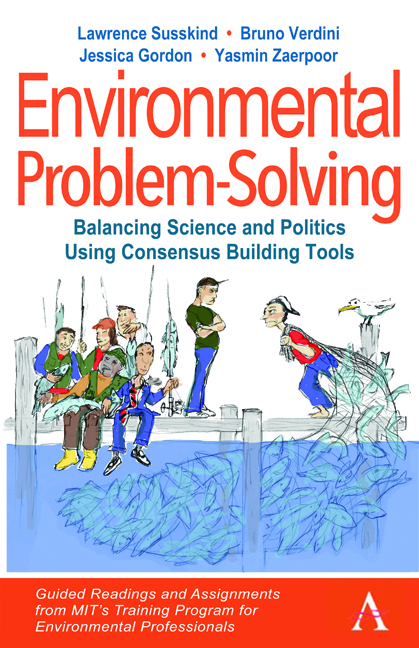 Environmental Problem-Solving: Balancing Science and Politics Using Consensus Building Tools
Environmental Problem-Solving: Balancing Science and Politics Using Consensus Building Tools Book contents
- Frontmatter
- Contents
- Acknowledgments
- Credits and Permissions
- Introduction
- Unit I: Influencing The Environmental Policy-Making Process
- Unit II: Ethical Dilemmas In Environmental Problem-Solving
- Unit III: Developments In Policy And Project Analysis
- Unit IV: Collective Action To Solve Environmental Problems
- Final Exam
- Conclusions
- Biographies
- References
- Index
Unit III: - Developments In Policy And Project Analysis
Published online by Cambridge University Press: 15 December 2020
- Frontmatter
- Contents
- Acknowledgments
- Credits and Permissions
- Introduction
- Unit I: Influencing The Environmental Policy-Making Process
- Unit II: Ethical Dilemmas In Environmental Problem-Solving
- Unit III: Developments In Policy And Project Analysis
- Unit IV: Collective Action To Solve Environmental Problems
- Final Exam
- Conclusions
- Biographies
- References
- Index
Summary
Introduction
This unit introduces some of the best-known tools and methods for analyzing the prospective and actual effects of alternative policies or proposed solutions to environmental problems. These include environmental impact assessment, cost-benefit analysis, ecosystem services analysis, risk assessment, computerbased simulation and modeling, and scenario planning. Tools like these are aimed at reducing uncertainty and ensuring that decision makers and stakeholders have the information they need to participate effectively in resource allocation and environmental problem-solving.
We know that the way risks are framed can have a decisive impact on the outcome of public policy-making and environmental problem-solving. The more serious people think the risks are, the more inclined they are to support whatever actions are proposed. In the same way, we know that efforts to spell out the economic costs associated with policy alternatives and solutions will quickly shape the trajectory of debates and discussion in the public eye. Fairly frequently, findings associated with sophisticated analyses tend to be appropriated by different parties to support their side, often in tandem with other political arguments. There are other occasions, however, where a balanced result prevails. The unit begins with an excerpt by Lawrence Susskind, Ravi K. Jain and Andrew O. Martyniuk, in which they highlight successful examples of sound environmental studies and demonstrate how they have been used to inform better environmental policies for a wider set of stakeholders.
The readings that follow highlight some of the judgments that can influence the findings of an environmental study. For example, if the goal of a solution to an environmental problem is to maximize public benefits and minimize public costs (in the way we discussed in Unit II), then how such benefits and costs are measured is crucial. Environmental impact assessments (EIAs), required by law in many countries prior to designs or policies being enacted, are meant to ensure that the advantages and disadvantages of certain projects or policy options are considered.
Arwin van Buuren and Sibout Nooteboom similarly emphasize the importance of including stakeholders in the EIA process from the beginning and of conducting the EIA before action is taken.
- Type
- Chapter
- Information
- Environmental Problem-Solving: Balancing Science and Politics Using Consensus Building ToolsGuided Readings and Assignments from MIT's Training Program for Environmental Professionals, pp. 159 - 328Publisher: Anthem PressPrint publication year: 2020


